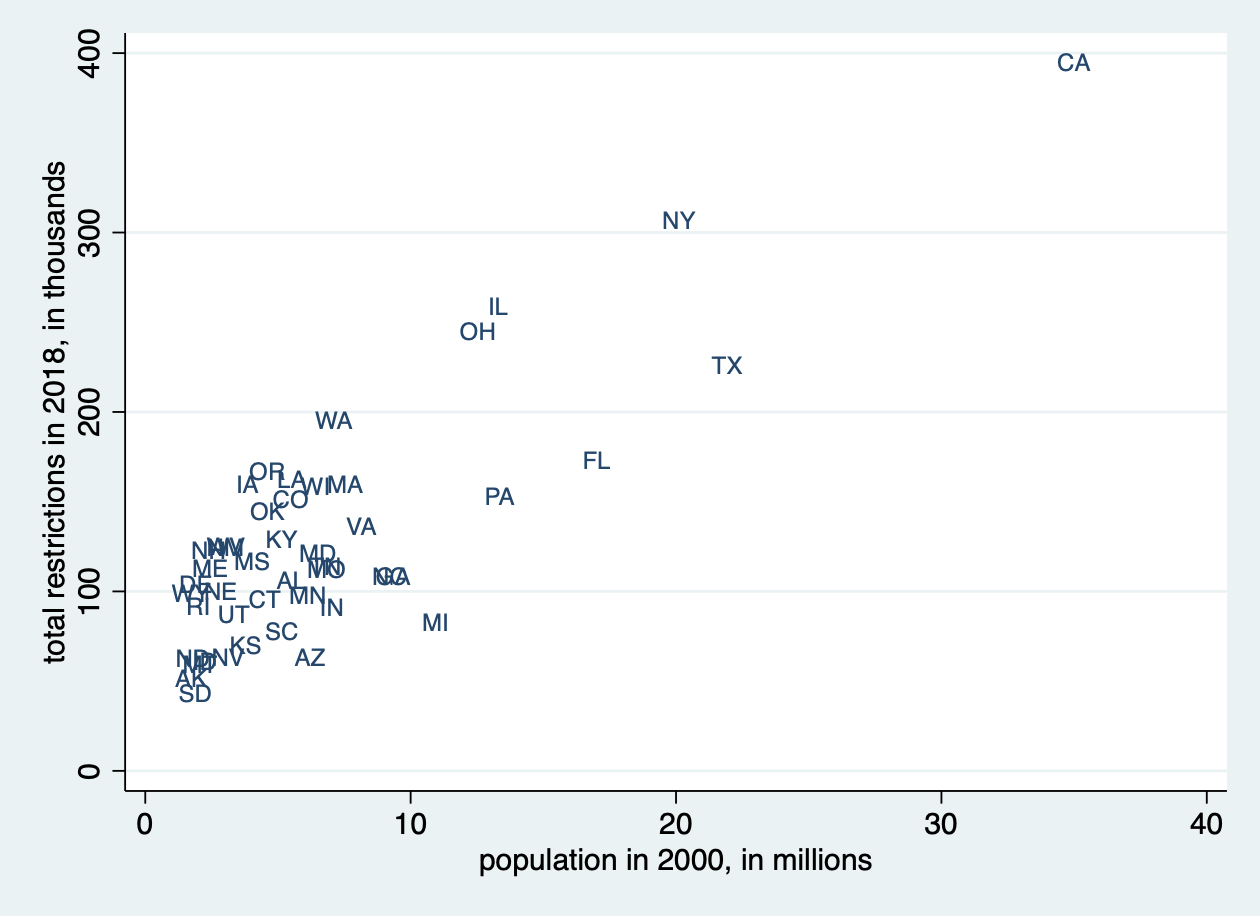Population predicts regulation — but why?
We found that across states, a doubling of population size is associated with a 22 to 33 percent increase in regulation.
The relationship between regulation and population is surprisingly robust- it also holds for Australian states and Canadian provinces, and based on the limited data we have seems to hold across countries too (for instance, the “free market” United States has 10 times as many regulations as Canada- just as it has 10 times the population).
What is less clear is why this relationship is so strong. Mulligan and Shleifer attribute it to a fixed cost of regulating; larger polities can spread this cost over more people, making the average cost of regulating cheaper, so they do it more. We note two other explanations: larger polities might have more externalities worth regulating, or if regulation produces concentrated benefits and dispersed costs, a larger population could make it harder for those harmed by regulation to organize collectively to oppose it.
That blog post is based on work from James Bailey, James Broughel and Patrick McLaughlin, the latter two my Mercatus colleagues, written by James Bailey.
